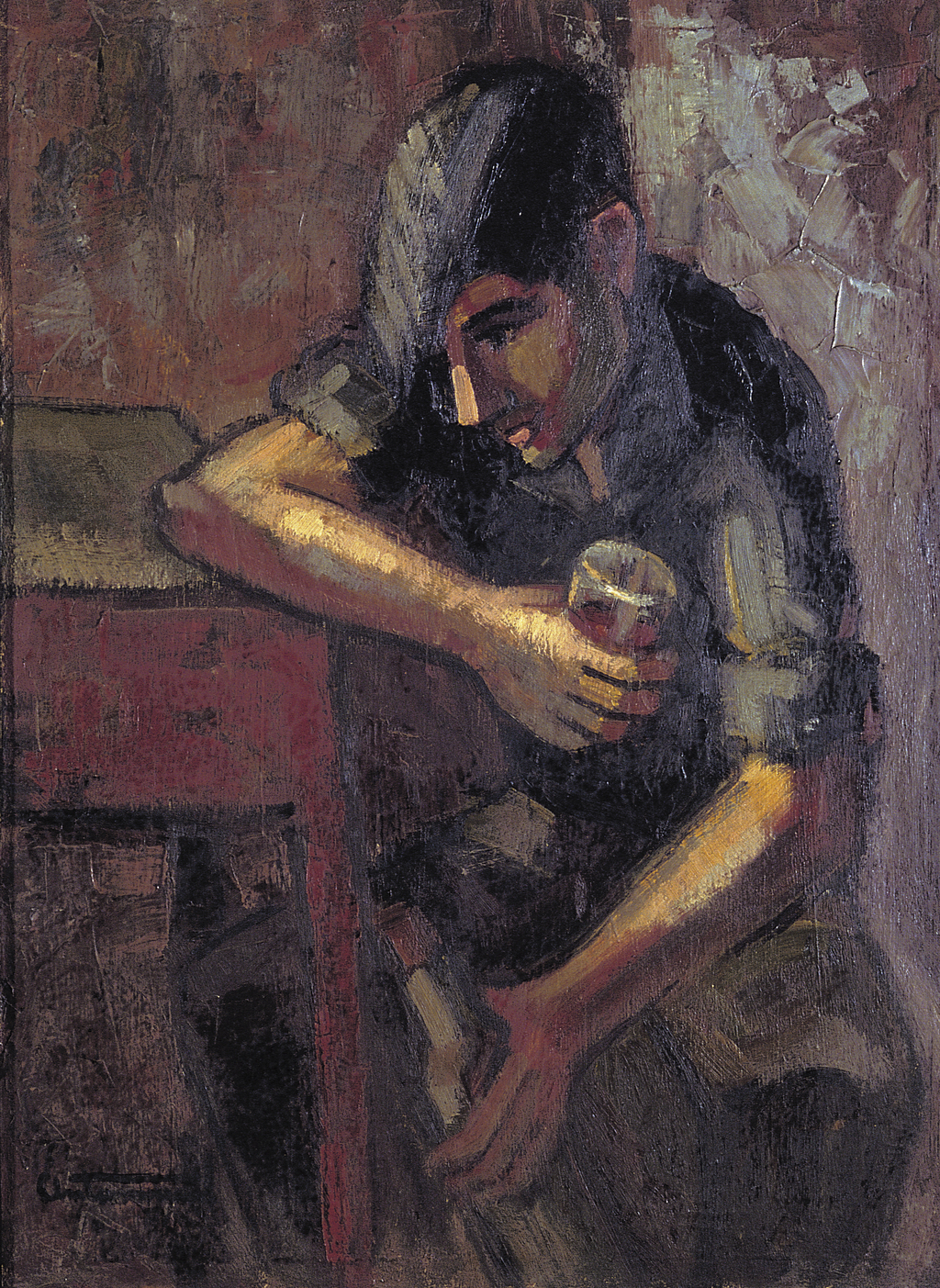El bevedor
There is good reason for considering this piece as the first true work by Antoni Miró. The painting can be taken as marking the beginning of the artist’s career not merely because it initiated a series of works, but also because it showed an incipient but clear social denunciation — something that became the hallmark of Miró’s work throughout the following six decades.
This first critique can be framed in terms of Italian neo-realist cinema’s influence on Spanish culture in the 1950s and early 1960s. Here, an individual’s suffering is used to exemplify the harsh living conditions of the working classes during and after wars, and during slumps. This is the germ of the later alignment with pictorial aims and ways of chronicling reality, albeit with a broader scope in this second and more lasting instance: that of western consumer society.
Realism is clearly evident in this work from both thematic and representational standpoints to a considerable extent. The painting highlights the boozing stemming from workers’ lack of opportunities, which is captured on the canvas by the melancholy of a taciturn young man drinking. The subject slumps on a chair while resting on a table. In one hand, he holds a full glass. The other hand nurses a bottle of liquor, ready to refill his glass later, which implies the likely recursive procedure.
The man is depicted in a home setting. The dwelling’s humble furniture and the man’s common clothes confirm his lowly social status. He seems to be in pensive mood, maybe wondering whether or not he should keep drinking. The work combines a degree of realism with strong material expressionism through the use of dense brush strokes and the use of high-contrast lighting full of discontinuities.
The figurative sketching strongly hints that vital desperation is wedded to the terrible suffering of the oppressed class. Here, the artist denounces the situation rather than merely portraying it. This early work reveals a desire for a fairer society and a willingness to use culture towards this end.
This eagerness to rid the world of social injustices has been a leitmotiv of Miró’s artistic career and is evident in these early works. In fact, as Blasco Carrascosa notes, “From the outset, he decided to paint what irked him, what he found unpleasant, and that was even repulsive. He chose to pursue an art of denunciation, through what has been termed awareness painting”. Miró’s interest in pricking his viewers’ consciences has been a central theme throughout his career and is used to spark outrage at the injustices shaping our lives.
Antoni Miró’s work often puts over a critical message based on a shared ill that is enshrined in an individual’s suffering. As Corredor-Matheos noted, this particular character “reveals the beginning or awakening of the artist’s attitude to the spectacle of the world, contemplated as something different and even alien but to which we are all inextricably linked.”
Santiago Pastor Vila
